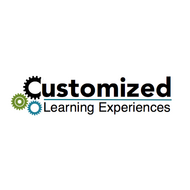Citing Sources in Nonfiction
(View Complete Item Description)This seminar will guide you through the process of quoting others, through direct quotes and indirect quotes. You will also learn about citations, which provide information on the source being used. Remember, when researching and writing about your findings, you should do so responsibly, knowing when to quote, when to paraphrase, and how to build a list of sources to reflect your research. The people, places, and events you research deserve accurate reporting. This seminar will help you do all of this confidently.StandardsCC.1.2.9-10.B: Cite strong and thorough textual evidence to support analysis of what the text says explicitly as well as inferences and conclusions based on an author’s explicit assumptions and beliefs about a subject.CC.1.2.9-10.C: Apply appropriate strategies to analyze, interpret, and evaluate how an author unfolds an analysis or series of ideas or events, including the order in which the points are made, how they are introduced and developed, and the connections that are drawn between them.CC.1.2.9-10.I: Analyze seminal U.S. documents of historical and literary significance, including how they address related themes and concepts.
Material Type: Lesson Plan




















